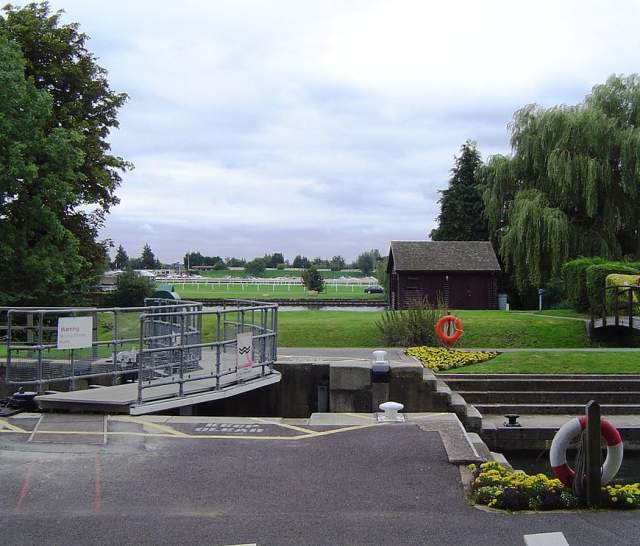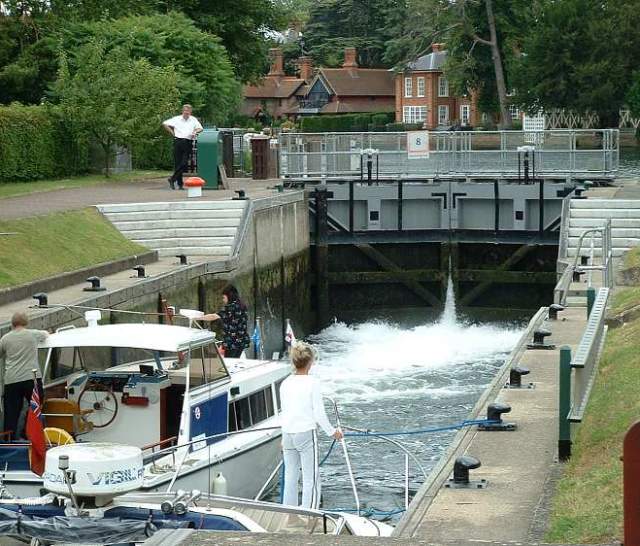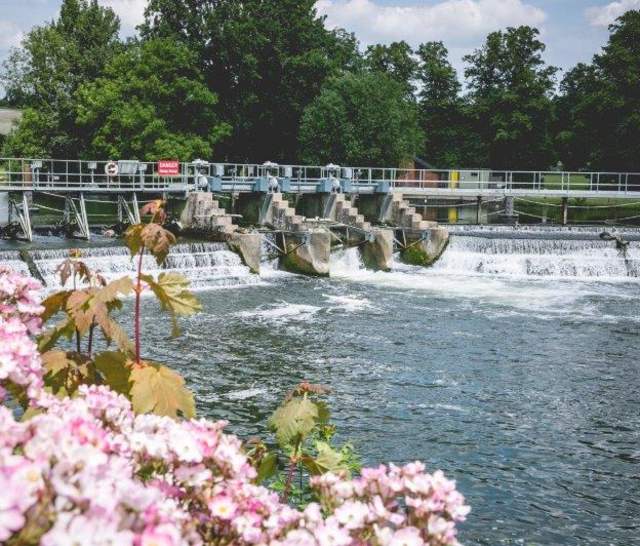River Thames Locks
There are 45 locks on the non-tidal River Thames.
The first proper locks appeared in the 1630s. Each one has its own individual history and unique personality. From the famous 'Father Thames' statue and the site of the first pineapple grown in Britain to a garden redesigned by the BBC's Ground Force. A lock is a large chamber, built across the stream, with large gates at either end that hold back the water. Boats can enter the lock at one level, the gates shut behind and the lock then fills or empties of water until the boat has reached the next level on the river. The Environment Agency has produced a leaflet Locks and Weirs; how they work.
Lock keepers on the Thames are generally available between 9am and 6pm during the summer season and take their lunch 1-2pm.
Many of the locks provide a great place to start your trip along the River Thames while our map shows attractions and accommodation. Here are some suggestions:
The Thames Path National Trail follows the bank of the River Thames for 184 miles through peaceful water meadows rich in wildlife, historic towns and cities such as Oxford, Henley and Windsor, many lovely villages and some of the best known landmarks of London. Start your walk from one of the Locks.
The life of a lock keeper
Tanya Rosenberg started working as a lock keeper on the River Thames 25 years ago and her pioneering appointment has led to the Environment Agency now having three women in charge of its Thames locks. Of the 45 non-tidal stretches, 40 have resident lock keepers and among them are Sarah Markham at Godstow and Katie Marshall at Benson.
“Every day is varied, I never know what to expect,” says Tanya. “That is one of the things about the job that I love, I never know what to expect.
Read about life as a lock keeper in Towpath Talk’s feature.
Credit: Paul Barnes, Environment Agency
Buscot
Once owned by Thomas Cook, it is now a National Trust picnic area. This is a beautiful area with frequent sightings of otters, kites and kingfishers. You can even stay at the lock in Lock Cottage available through the National Trust.
A short walk from the lock is Buscot Manor B&B, a beautiful Queen Anne Manor House built in 1692.
Goring
This lock began life back in the 1500s as a weir and became a lock in 1787. It is situated at the Goring Gap in the Chiltern Hills and borders Goring-on-Thames, Oxfordshire and on the opposite side of the river is Streatley-on-Thames, Berkshire. You may see kingfishers, buzzards, red kites and Egyptian geese. You can choose to join the Thames Path or The Ridgeway here. Enjoy lunch or afternoon tea at the nearby Swan at Streatley.
Boulters
This was a popular lock in Victorian times and the favourite pastime of the wealthy was to enjoy a leisurely punt. Today the lock is still popular today with nearby mini-golf complex and large playground ideal for all the family. There is a Pay & Display car park and you can dine in Boulters Riverside Brasserie or Terrace Bar.
Days
Said to be the most historic place in Oxfordshire, where a hilltop fort was built by iron-age man and it has also been a religious area. You can walk to the nearby Wittenham Clumps. The World Poohsticks Championships are held here.
Penton Hook
One of the newer locks this was opened in 1815 and is the ‘highest lock’ built by the Corporation of London. There is a large marina here, Penton Hook Marina , which is Britain’s largest inland marina and also Penton Hook Island which is rich in wildlife.
To find out more about the locks
If you want to find out about the facilities at each lock, visit the Environment Agency locks page. Please note that when visiting a lock site, care should be taken at all times, for guidance on safety at River Thames locks, go to the Environment Agency's safety at locks pages.



